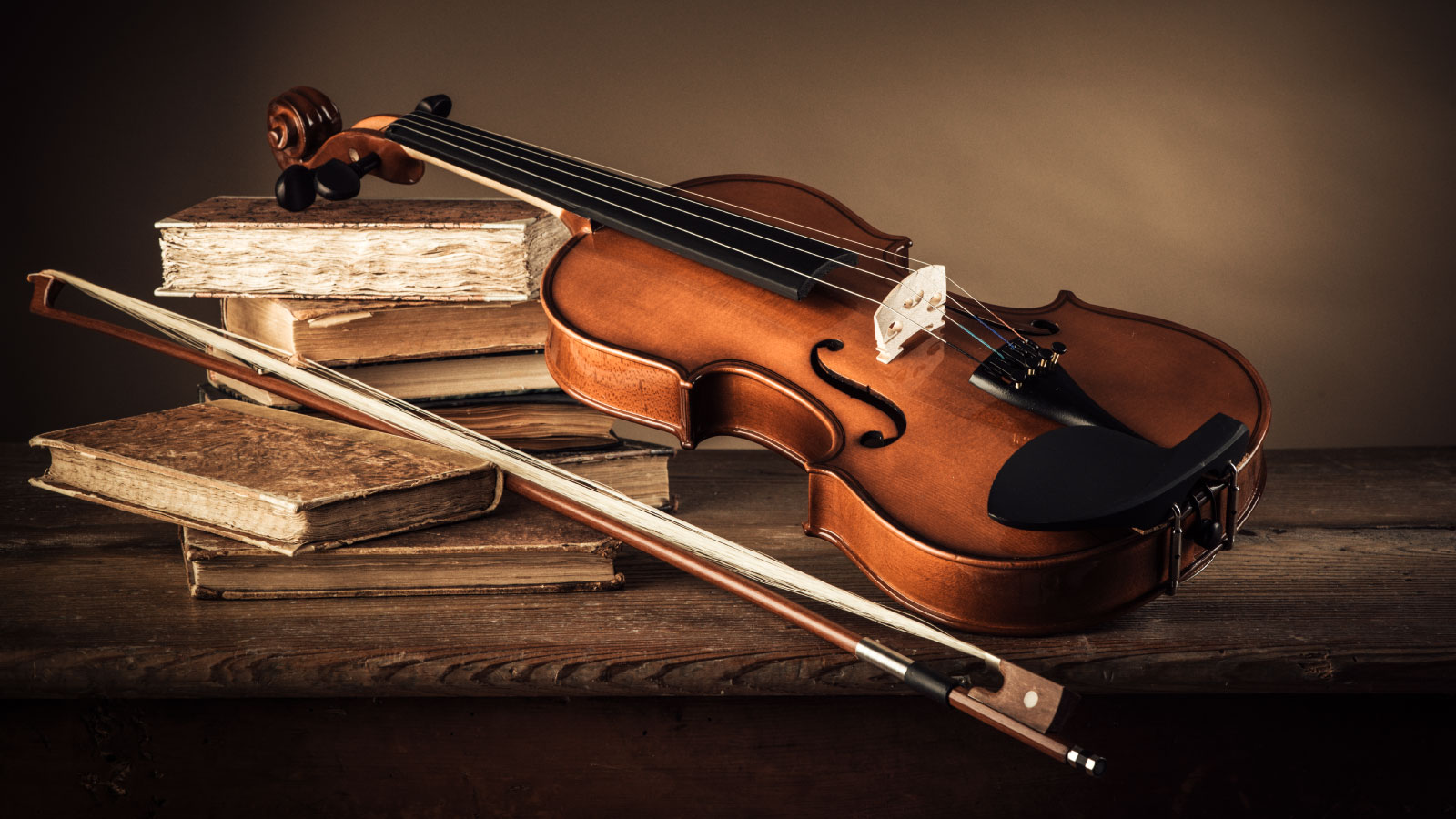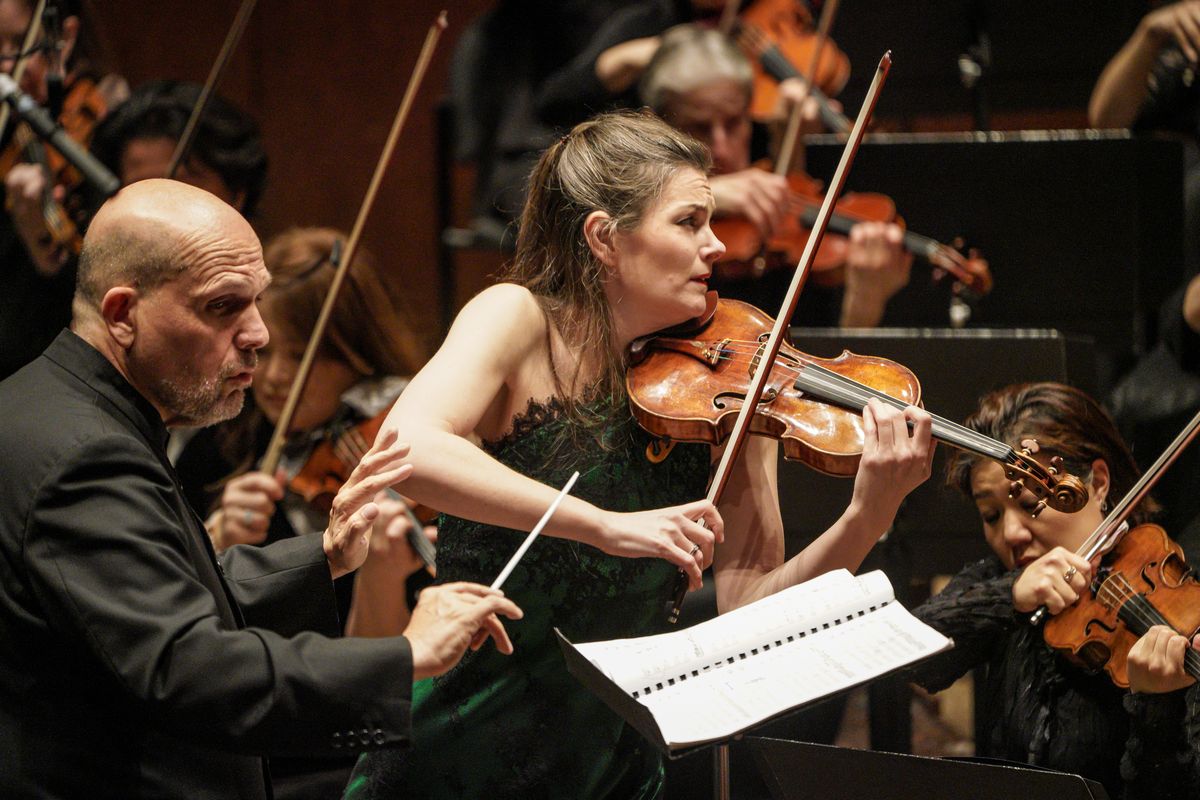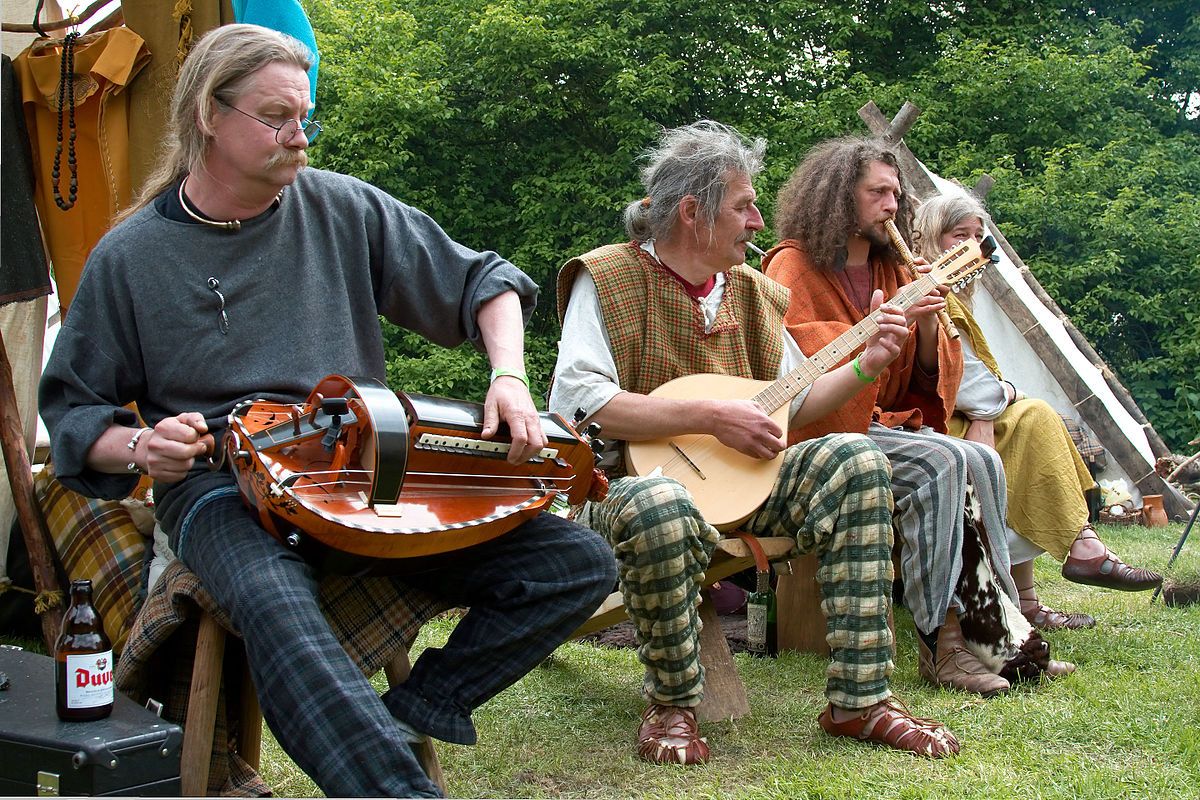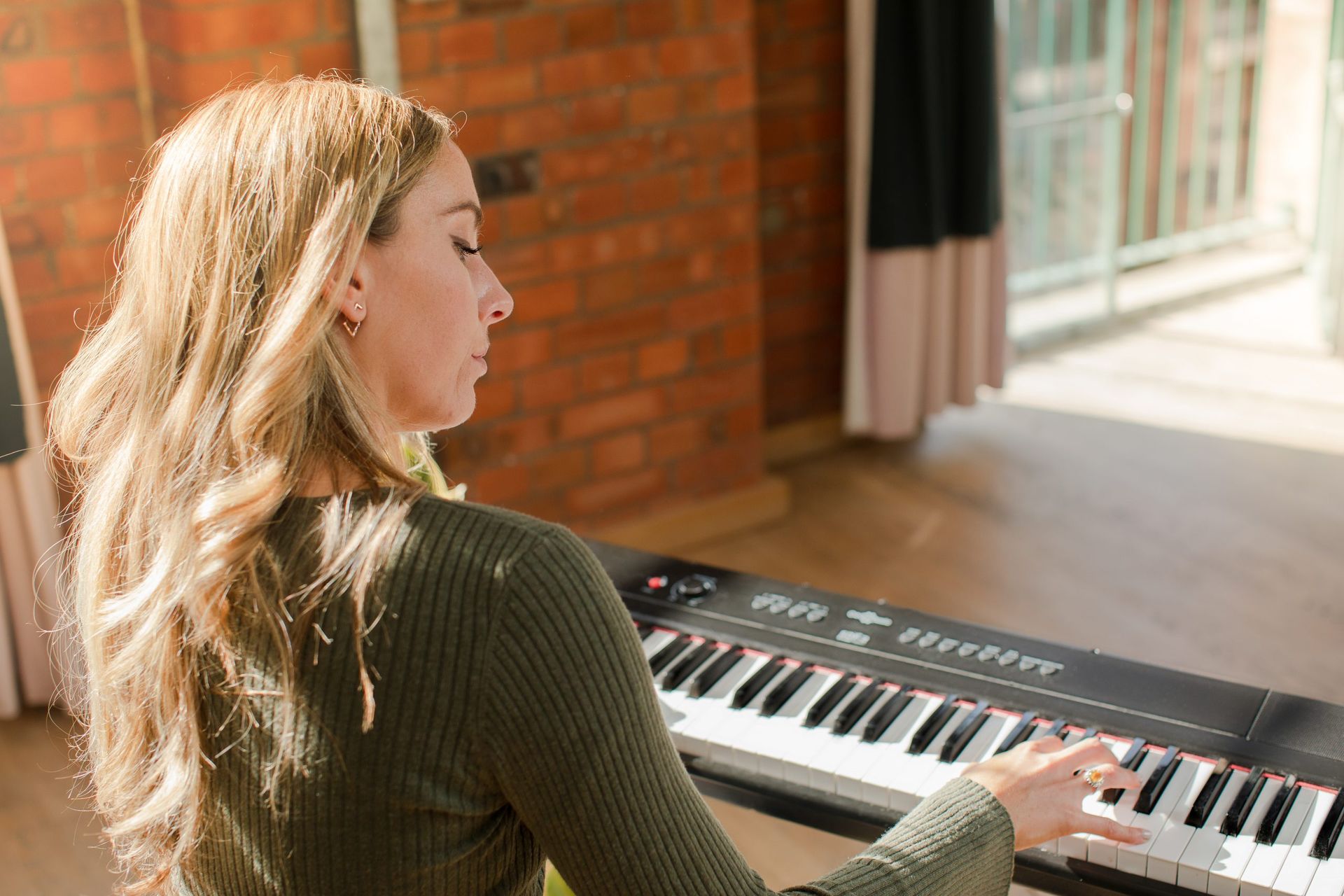Home>Production & Technology>Tempo>What Is The Tempo Of Classical Music


Tempo
What Is The Tempo Of Classical Music
Modified: January 22, 2024
Discover the Tempo of Classical Music and its importance. Explore the impact of different tempos on mood, rhythm, and musical expression.
(Many of the links in this article redirect to a specific reviewed product. Your purchase of these products through affiliate links helps to generate commission for AudioLover.com, at no extra cost. Learn more)
Table of Contents
Introduction
When it comes to classical music, one of the most essential and fascinating aspects is tempo. Tempo is the speed or pace at which a piece of music is performed, and it plays a crucial role in shaping the mood, character, and overall interpretation of a musical composition. With its ability to evoke powerful emotions and convey intricate musical expressions, tempo is a fundamental element that both performers and listeners engage with in the world of classical music.
In this article, we will delve into the concept of tempo in classical music, exploring its definition, importance, and various manifestations. We will take a journey through different tempos commonly associated with classical music and understand how tempo influences different musical forms. Additionally, we will explore the techniques used by musicians to interpret and express tempo in their performances. Through notable examples of tempo in classical music, we will gain a deeper appreciation for the role it plays in shaping the artistic message conveyed by composers.
Whether you are a casual listener, a musician, or someone with a deep passion for classical music, understanding tempo is key to appreciating the nuances and complexities of this genre. So, let us embark on this exploration of tempo in classical music and discover the enchanting world it unveils.
Definition of Tempo
In the realm of music, tempo refers to the speed or pace at which a piece of music is performed. It determines the rhythm and overall feel of a composition, acting as a guide for musicians to play at a specific speed. Tempo is typically indicated at the beginning of a musical score through specific Italian terms, such as adagio (slow), allegro (fast), or andante (moderate).
Tempo plays a significant role in shaping the mood, emotion, and intensity of a musical piece. It sets the foundation for the overall interpretation and allows musicians to convey the composer’s intended message. By adjusting the tempo, performers have the power to transform a composition, highlighting its different facets and invoking various emotional responses.
It is important to note that tempo is a relative concept, as it is influenced by both the composer’s intentions and the performer’s interpretation. While a specific tempo marking may be indicated in the score, musicians have the freedom to bring their own artistic sensibilities and understanding of the piece to shape the final tempo. This flexibility allows for unique and dynamic performances, adding a personal touch to classical compositions.
Tempo is measured in beats per minute (BPM), indicating the number of beats or pulses occurring within a minute. The tempo can range from very slow, such as largo or grave, to extremely fast, such as presto or vivace. Different tempos give each piece its distinct character and energy, from contemplative and introspective to vibrant and exhilarating.
Understanding the concept of tempo is essential for both performers and listeners. Musicians must grasp the nuances of tempo to accurately communicate the composer’s vision, while listeners benefit from recognizing and appreciating the variations in tempo, enhancing their overall listening experience.
Importance of Tempo in Classical Music
Tempo plays a vital role in classical music, as it helps bring the composer’s intentions to life and shapes the emotional impact of the music. The precise tempo chosen by a performer can drastically change the mood, atmosphere, and overall interpretation of a composition.
One of the key reasons why tempo is crucial in classical music is its ability to influence the perception of time. By selecting a specific tempo, a composer can control the pace at which the music unfolds, guiding the listener’s experience. A slower tempo can create a sense of tranquility and contemplation, allowing for a deeper emotional connection, while a faster tempo can instill a sense of excitement, energy, and intensity.
Furthermore, tempo serves as a guide for performers, providing a framework to navigate through the musical piece. It helps musicians maintain cohesion and synchronization within an ensemble, ensuring that the different instrumental or vocal parts align harmoniously. Tempo acts as a unifying force that allows musicians to collectively bring a composition to life.
Tempo also plays a significant role in conveying the intended character of a musical composition. Different tempos can evoke different emotions, enhancing the expressive power of the music. For example, a piece played at a brisk allegro tempo may communicate a sense of joy, while a slow adagio tempo might convey melancholy or introspection.
Additionally, in certain musical forms, such as sonatas or symphonies, the tempos of different movements are carefully chosen to create contrast and variety. By alternating between fast and slow tempos, composers create a dynamic and engaging musical experience for the audience.
Overall, tempo serves as a fundamental element in classical music, allowing composers and performers to convey emotions, shape the narrative, and engage listeners on a profound level. Its significance lies in its ability to manipulate time, guide performances, and elicit powerful emotional responses.
Common Tempos in Classical Music
Classical music encompasses a wide range of tempos, each characterized by its own unique qualities and effects. Below are some of the most common tempos found in classical music:
- Adagio: This tempo is slow and leisurely, often conveying a sense of calmness, reflection, and solemnity. It allows the listener to appreciate the intricate details and emotional depth of the music.
- Andante: Meaning “walking pace” in Italian, the Andante tempo is moderate and flowing. It strikes a balance between relaxation and forward movement, creating a pleasant and melodious atmosphere.
- Allegro: This term translates to “fast” or “lively” and is associated with energetic and spirited music. Allegro tempos bring a sense of excitement, vitality, and animation, driving the music forward with a spirited pace.
- Presto: Translating to “quick” or “fast,” Presto tempos are among the fastest in classical music. They deliver a thrilling and exhilarating experience, often associated with virtuosic displays and rapid, intricate musical passages.
- Largo: The Largo tempo is exceptionally slow, providing ample space for profound emotional expression. It can evoke a sense of grandeur, introspection, and even a hauntingly beautiful quality as the music unfolds at a deliberate and measured pace.
- Moderato: As the name suggests, Moderato is a moderate tempo that strikes a balance between the fast and slow ends of the spectrum. It allows for a more relaxed and controlled performance, offering a sense of stability and clarity.
These tempos are not exhaustive, but they represent a few of the most widely used in classical music. Composers often combine and contrast these tempos within a single piece to create a dynamic and engaging musical experience, taking listeners on a journey of varied emotions and moods.
It is important to note that the interpretation of tempos can vary among musicians and across different musical eras or styles. While composers often specify the tempo through Italian terms in their scores, performers bring their own artistic sensibilities, personal interpretations, and technical abilities to the music, lending an individual touch to each performance.
By understanding and appreciating the common tempos in classical music, listeners can develop a deeper understanding of the composers’ intentions and better engage with the emotional landscapes portrayed in the music.
The Role of Tempo in Different Musical Forms
The role of tempo extends beyond setting the overall pace of a musical composition in classical music; it also plays a crucial role in shaping different musical forms. Tempo acts as a structural element that helps define the character and narrative progression within various musical forms. Let’s explore the role of tempo in some prominent musical forms:
- Sonata: In the sonata form, which is commonly used in instrumental pieces, tempo plays a significant role in distinguishing the various sections. The opening movement, known as the exposition, often establishes the primary thematic material and typically features an energetic tempo. The development section that follows may vary the tempo and explore different musical ideas, creating tension and contrast. Finally, the recapitulation returns to the original themes, often characterized by a return to the opening tempo, providing a satisfying sense of resolution.
- Opera: Tempo is essential in opera, where vocal performances and theatrical elements are combined with instrumental music. The tempo can indicate the emotions and intentions of the characters, as well as the dramatic pacing of the plot. Fast tempos may accompany scenes of excitement or action, while slower tempos may heighten moments of reflection or introspection.
- Symphony: Symphonies typically consist of several movements, each with its own tempo and character. The opening movement, known as the allegro, often features a fast tempo, establishing a sense of energy and momentum. The second movement, often adagio or andante, provides a contrast with a slower tempo, allowing for introspection and lyrical expression. The subsequent movements may vary in tempo, showcasing different moods and musical ideas.
- Dance Forms: In classical music, various dance forms, such as the minuet, waltz, or polonaise, incorporate specific tempos. These tempos provide a rhythmic structure for dancers and inform the musical phrasing. For example, a waltz is typically played in triple meter with a moderate tempo, guiding dancers to three beats per measure.
The role of tempo in different musical forms showcases its versatility and adaptability to the specific requirements of each genre. By understanding the relationship between tempo and musical structure, performers and listeners can appreciate the deliberate choices made by composers to create engaging and cohesive compositions.
Techniques for Interpreting Tempo in Classical Music
Interpreting tempo in classical music is a delicate and nuanced process that requires a deep understanding of the composer’s intentions, musical context, and personal artistic sensibilities. While tempo markings can provide guidance, they often leave room for interpretation. Here are some techniques that musicians employ to interpret tempo:
- Listening to exemplary performances: Musicians often study and draw inspiration from recordings of renowned performers who have interpreted a particular composition. By listening to these performances, they gain insight into different tempos, stylistic choices, and emotional interpretations.
- Studying the composer’s intentions: Musicians delve into the historical and cultural context surrounding the composition to understand the composer’s intentions. Letters, writings, and other sources can provide valuable insights into the desired tempo and expressive qualities.
- Paying attention to score markings: While tempo markings in the score are not always definitive, they offer valuable clues. Musicians examine the composer’s indications, such as adjectives (lively, solemn) or metronome markings (BPM), to grasp the intended tempo.
- Considering the musical style and era: Musicians take into account the musical style and era in which the composition was written. Different eras have distinctive performance practices and conventions that influence the interpretation of tempo, such as the historically informed performance practice movement.
- Finding a balance between personal expression and faithfulness: While musicians have the freedom to bring their artistic interpretation to a piece, they must maintain faithfulness to the composer’s intentions. They aim to strike a balance between expressing their own musical ideas while respecting the essence of the composition.
- Collaborating with fellow musicians: Tempo interpretation often involves collaboration within an ensemble or conductor. Discussions, rehearsals, and shared artistic vision help musicians align their interpretations to create a cohesive performance.
Ultimately, the interpretation of tempo in classical music is an amalgamation of research, artistic sensibility, and collaboration. Musicians strive to bring out the essence of the composition while infusing their own personal touch, creating a unique and engaging performance.
Notable Examples of Tempo in Classical Music
Classical music is replete with examples of the exquisite use of tempo to convey different emotions and musical expressions. Here are some notable examples:
- Beethoven’s Symphony No. 5: The opening movement of Beethoven’s Symphony No. 5 is renowned for its striking and dramatic use of tempo. The famous four-note motif, played at a brisk allegro tempo, sets the stage for an intense and exhilarating musical journey.
- Mozart’s Symphony No. 40: The second movement of Mozart’s Symphony No. 40 is a prime example of how tempo can evoke a sense of deep melancholy and introspection. The music flows at a moderate andante tempo, allowing for the expression of powerful emotions.
- Chopin’s Nocturnes: Chopin’s Nocturnes, such as Op. 9 No. 2, showcase the composer’s ability to craft beautiful melodies within a slow and intimate tempo. The adagio marking creates a serene and contemplative atmosphere, mesmerizing listeners with its elegance and emotional depth.
- Debussy’s Claire de Lune: Debussy’s famous piano piece Claire de Lune exemplifies the use of tempo to paint vivid musical imagery. The dreamy and expressive andante tempo takes listeners on a poetic journey, evoking a sense of moonlit serenity and shimmering beauty.
- Bach’s Brandenburg Concerto No. 3: Bach’s Brandenburg Concerto No. 3 features a vibrant and energetic allegro tempo. The fast-paced tempo, combined with intricate contrapuntal writing, creates a sense of joyful exuberance, showcasing the masterful interplay of different instrumental voices.
These examples illustrate the diverse ways in which composers have utilized tempo to captivate audiences and convey their musical intentions. From intense and dramatic to introspective and serene, tempo is a powerful tool that helps shape the emotional landscape in classical music.
It is important to remember that these examples represent just a fraction of the incredible repertoire within classical music. Each composition offers a unique exploration of tempo, showcasing the immense creativity and range of expression found in this genre.
Conclusion
Tempo is a vital element in classical music, influencing the overall structure, emotional impact, and interpretive choices made by musicians. Its dynamic nature allows for a range of expressive possibilities, bringing compositions to life with a unique blend of rhythm and pace.
Throughout this article, we have explored the definition of tempo, its importance in classical music, and its role in different musical forms. We have seen how tempos such as adagio, andante, allegro, presto, largo, and moderato each contribute to the emotional and narrative aspects of a composition.
Interpreting and expressing tempo requires musicians to immerse themselves in the composer’s intentions while adding their own artistic flair. They employ techniques such as studying exemplary performances, considering the musical style and era, and maintaining a balance between individual expression and faithfulness to the composer’s vision.
Notable compositions, such as Beethoven’s Symphony No. 5 and Mozart’s Symphony No. 40, have showcased the profound impact of tempo on musical experiences. These compositions, along with the works of Chopin, Debussy, and Bach, demonstrate the vast array of emotions and imagery that can be evoked through different tempos.
In concluding, tempo is a universal language in classical music, transcending cultural and historical boundaries. It allows composers and performers to communicate and connect with audiences on a deeply emotional level. Whether it is the contemplative elegance of a nocturne or the exhilarating energy of a symphony, tempo plays a pivotal role in shaping the beauty and power of classical music.
So, as we continue to appreciate and explore the rich legacy of classical music, let us not overlook the significance of tempo, embracing its capacity to transport us to extraordinary realms of musical expression.











